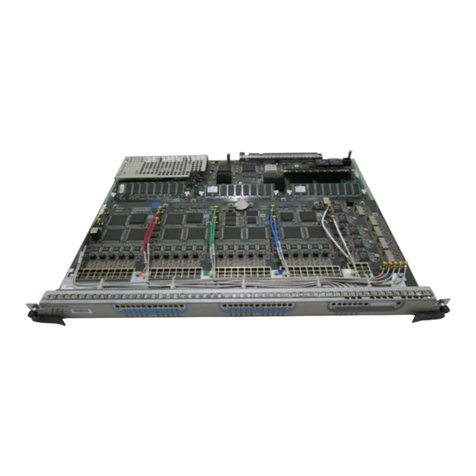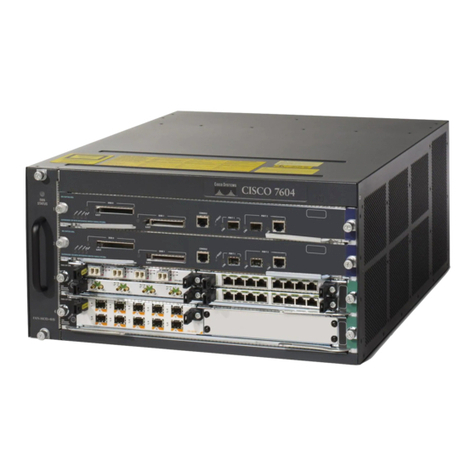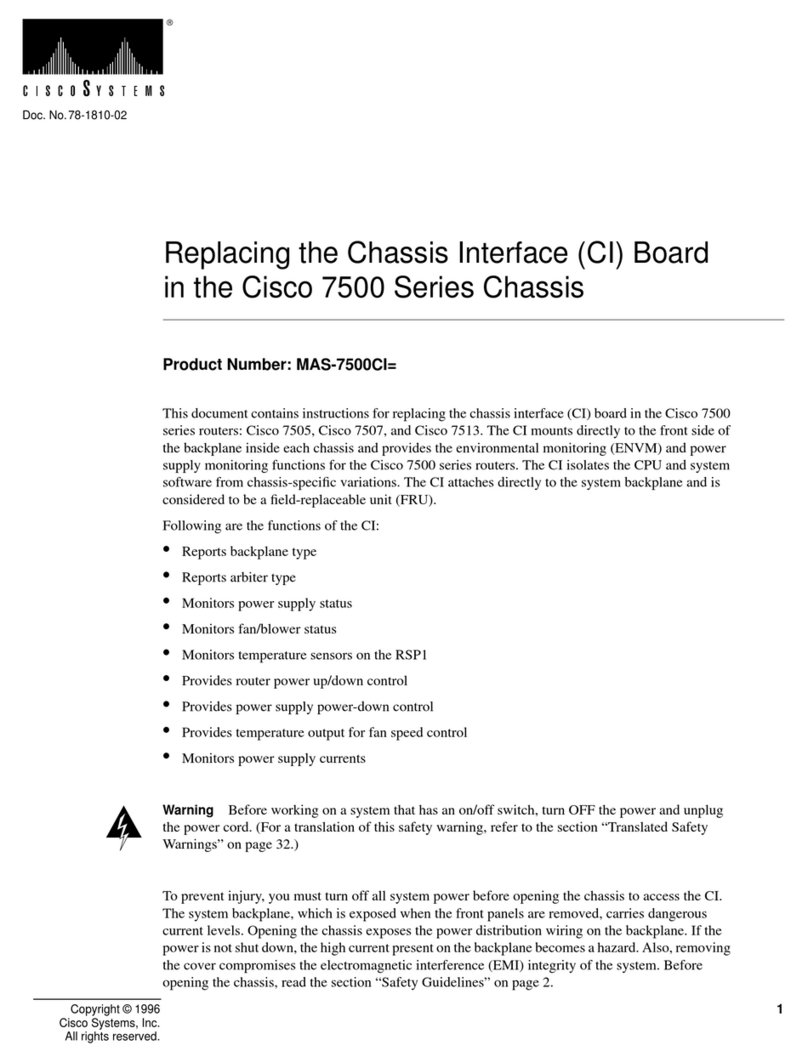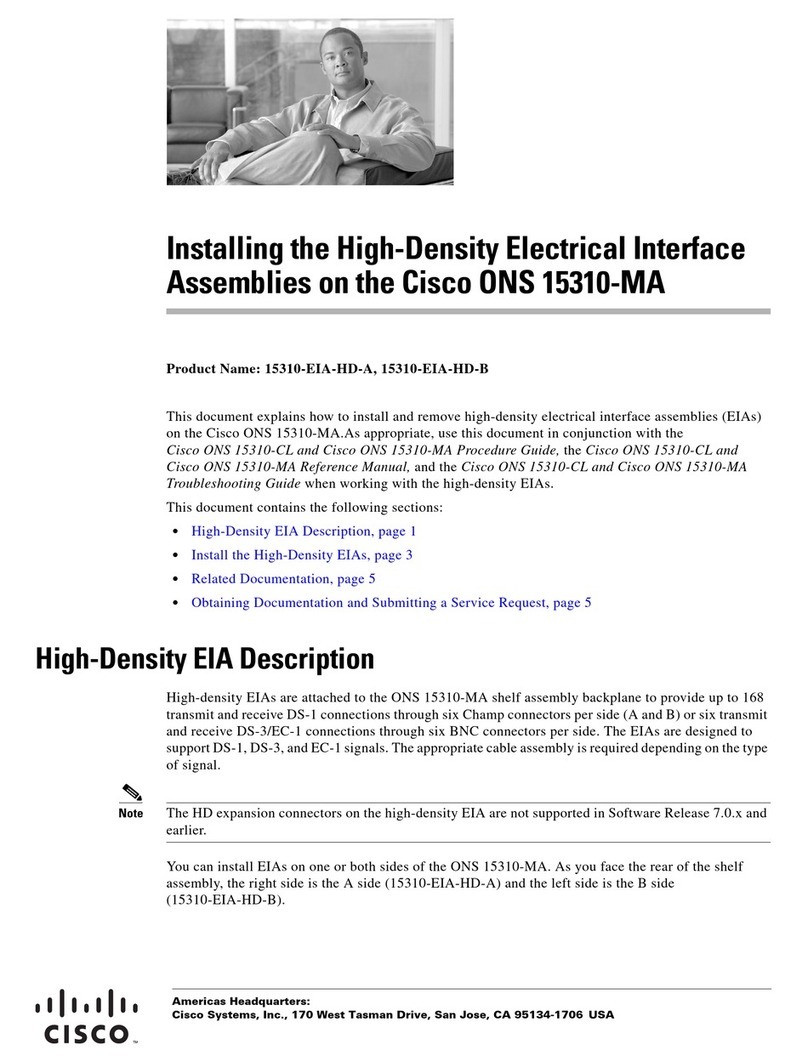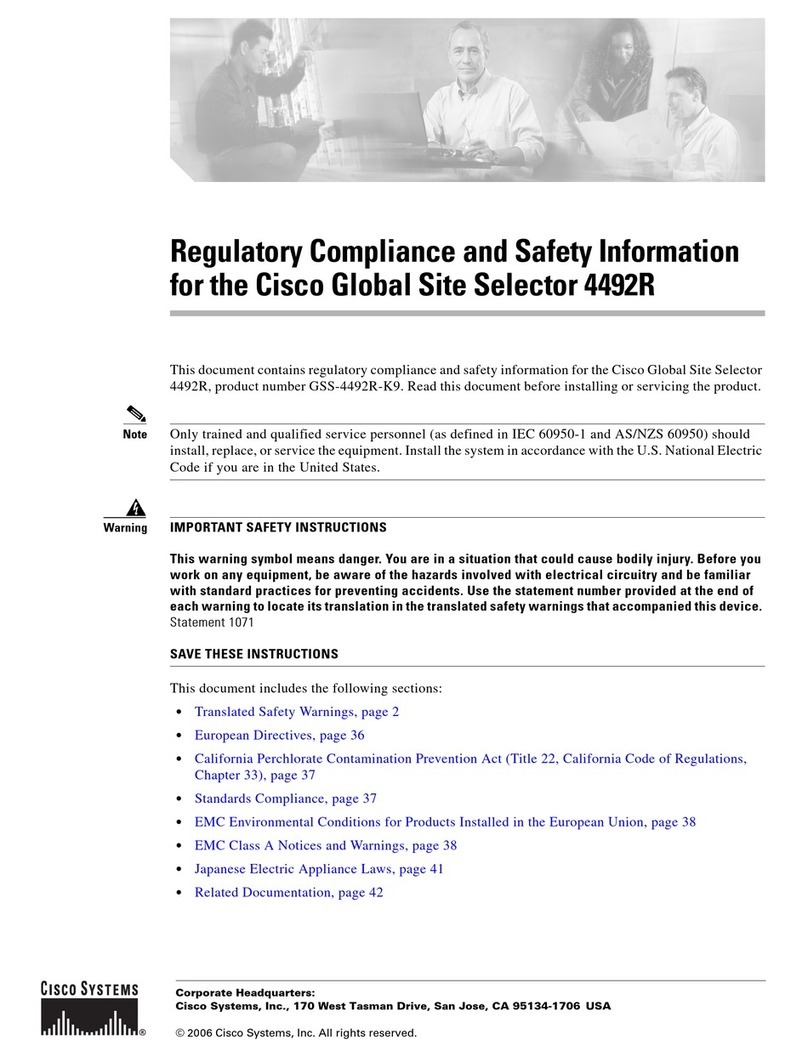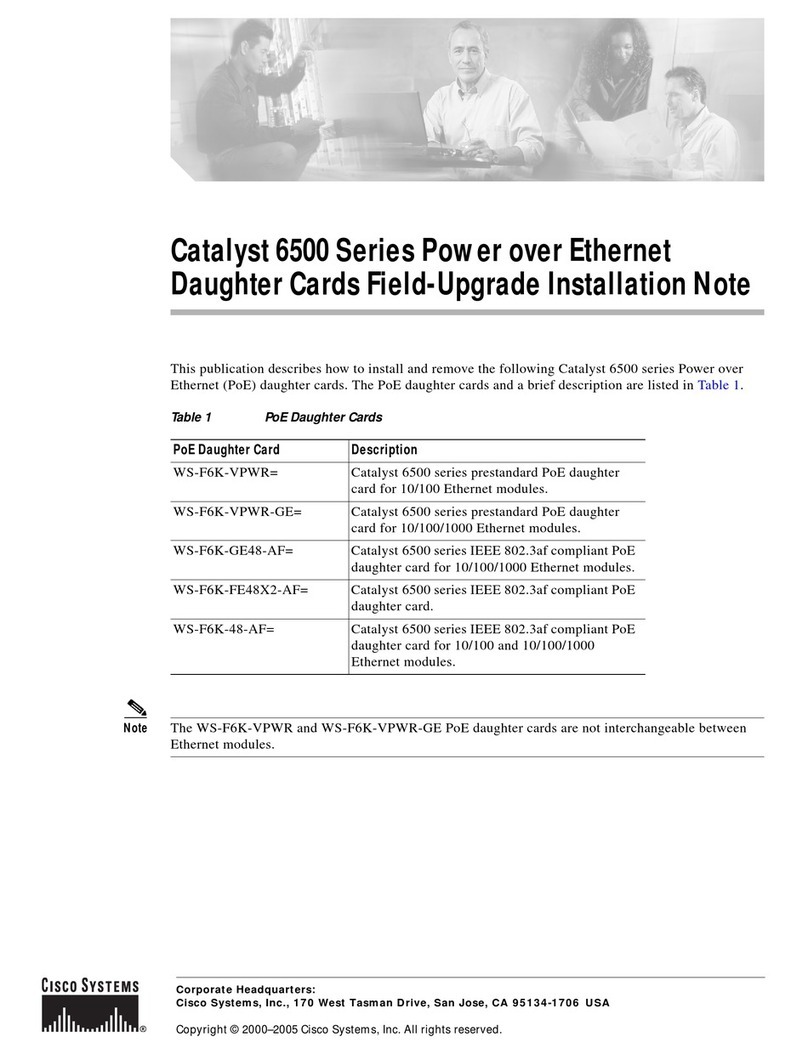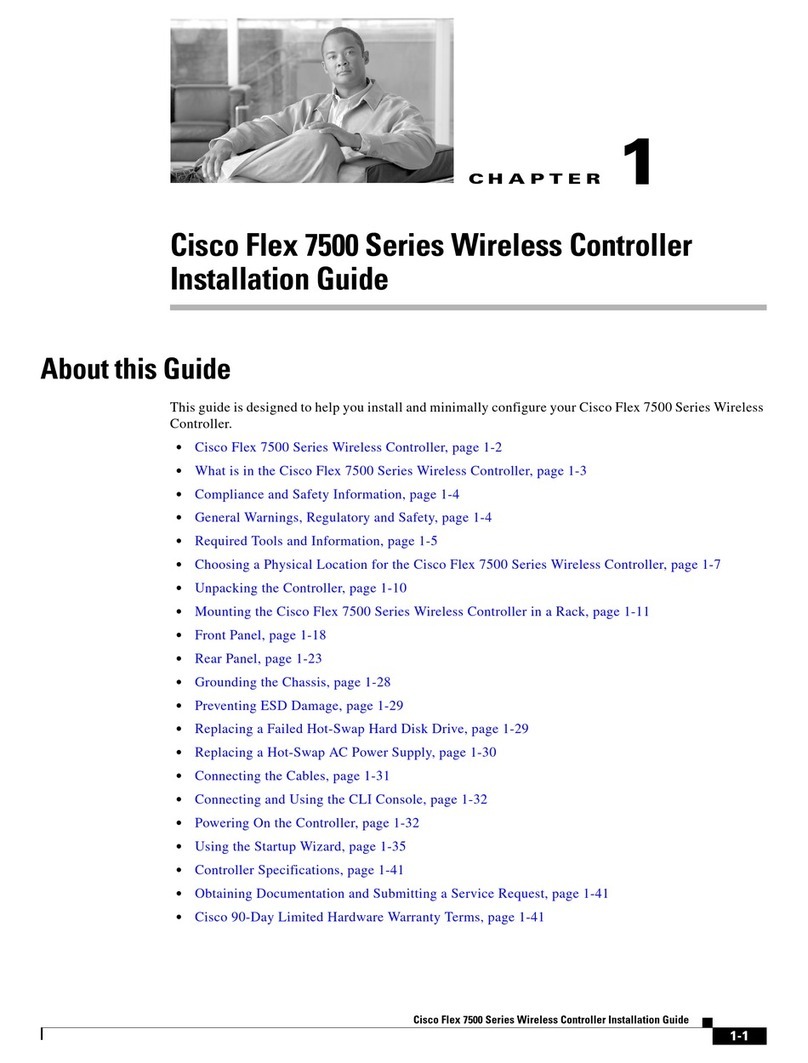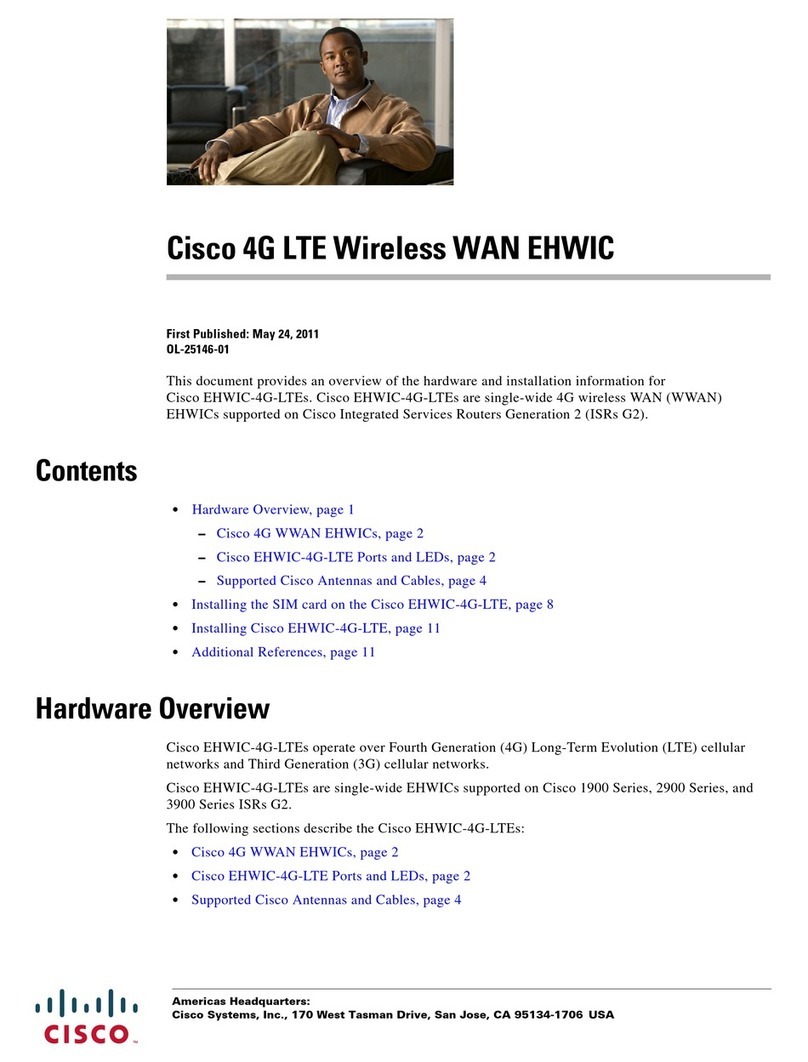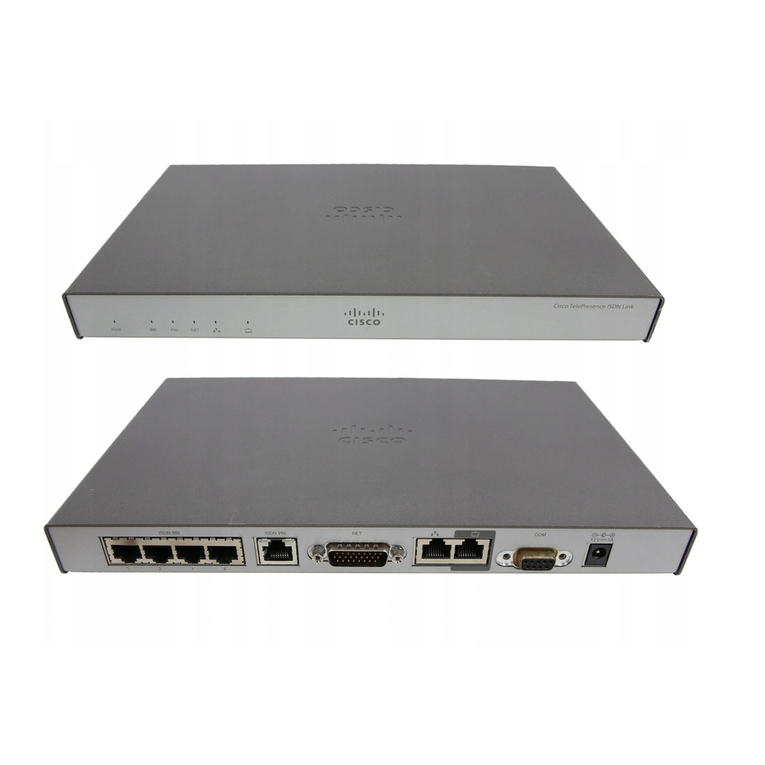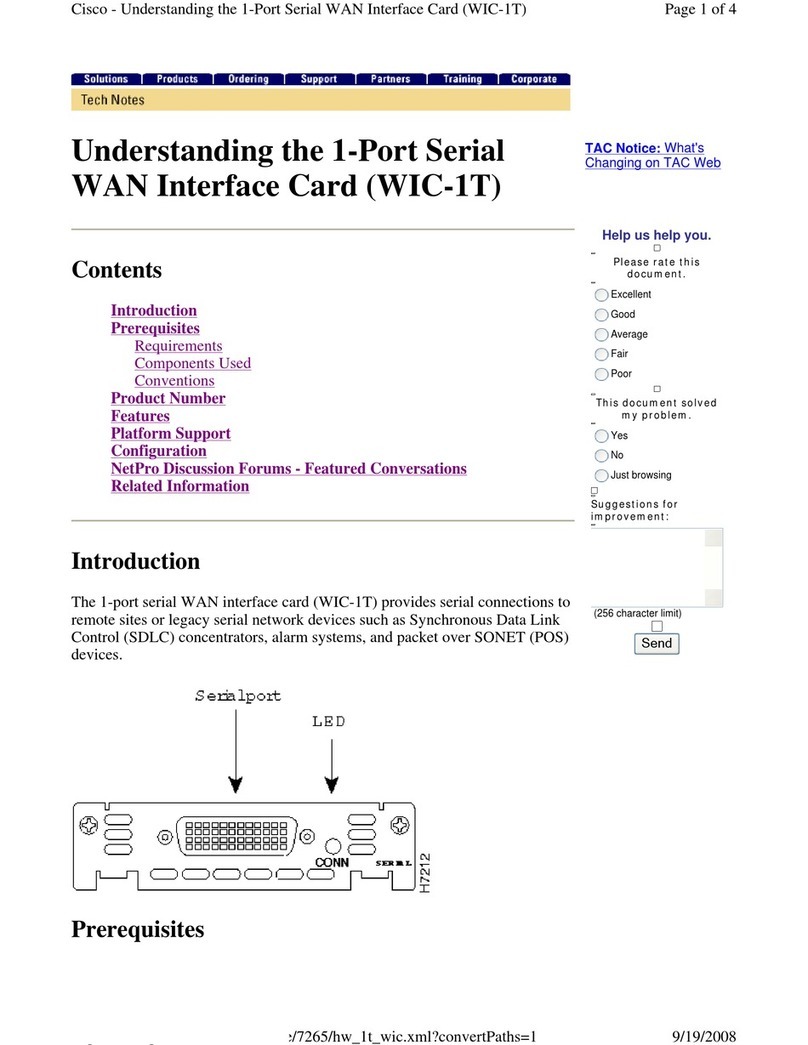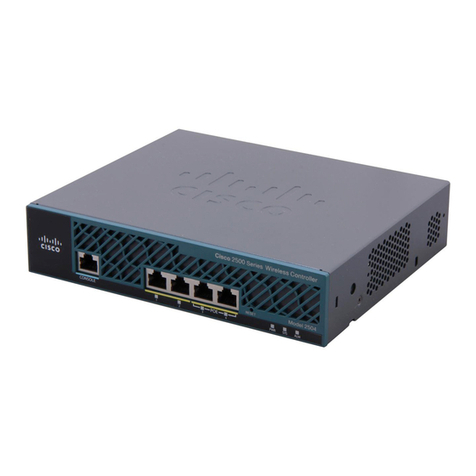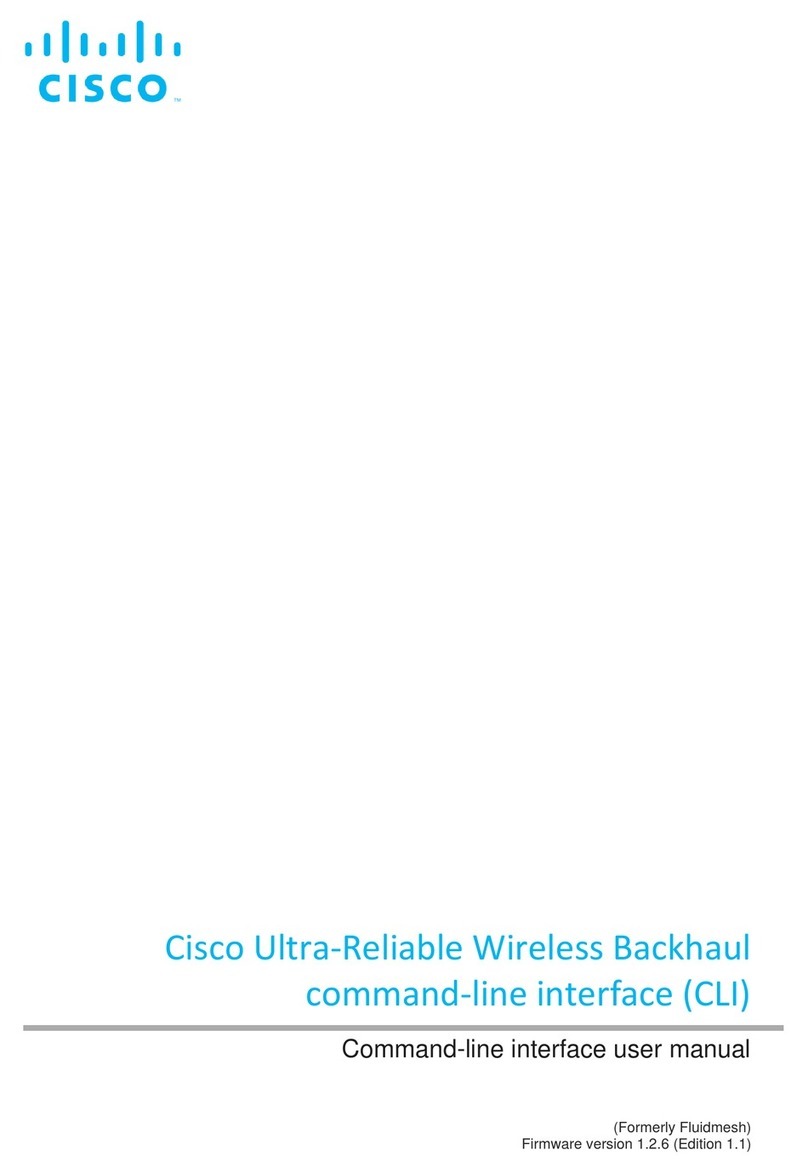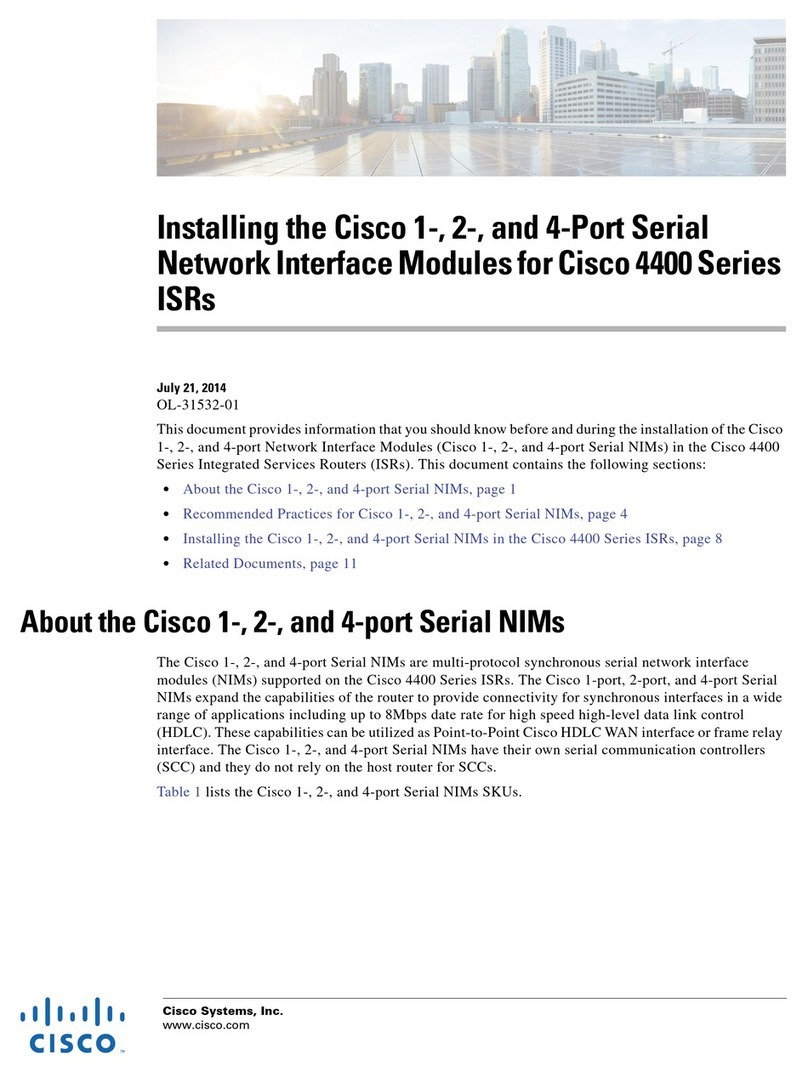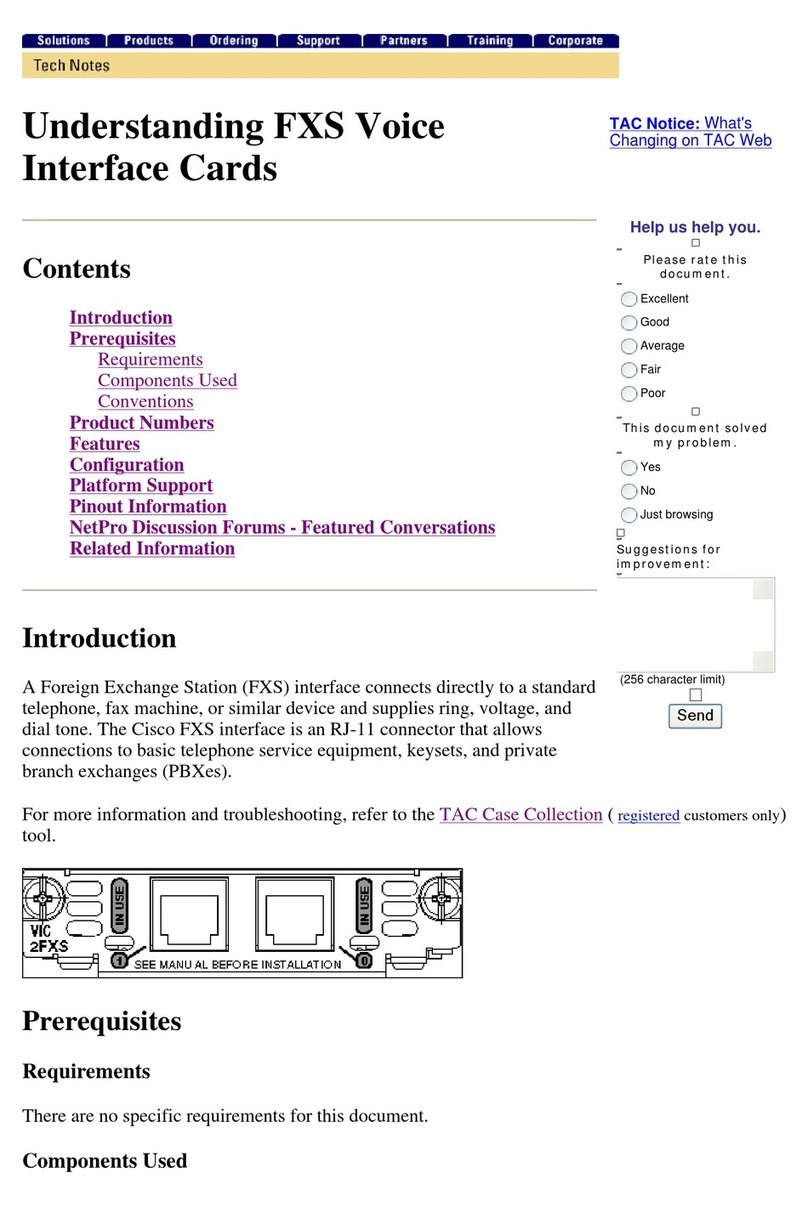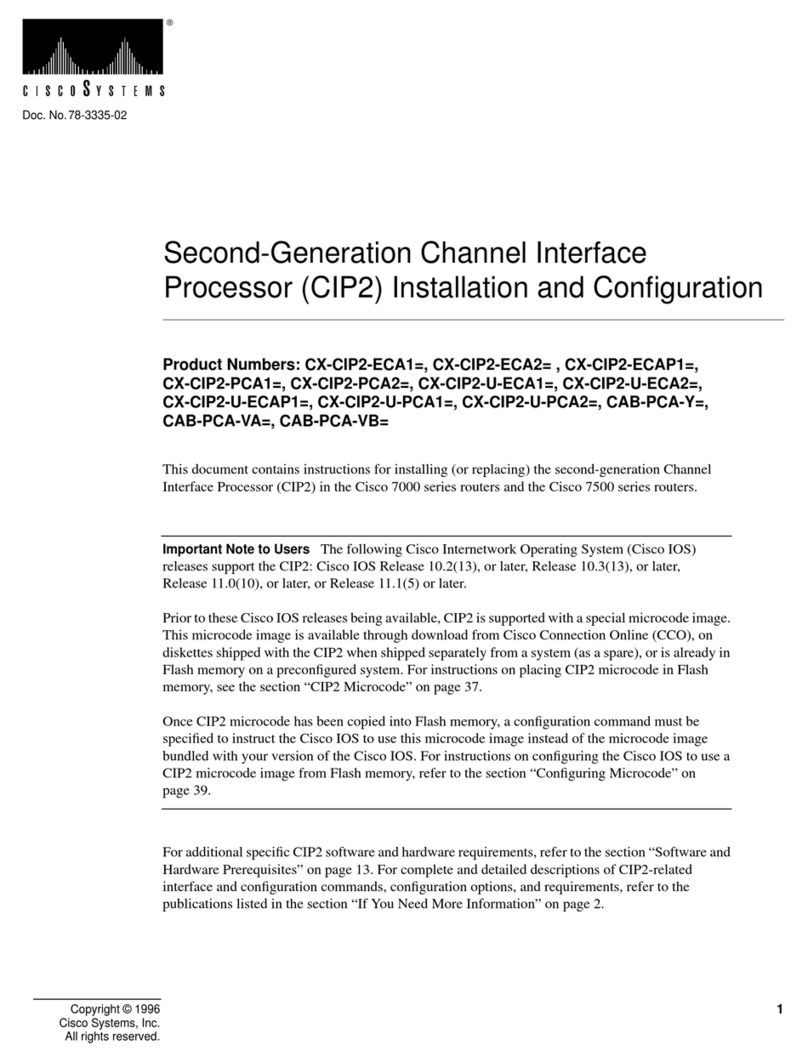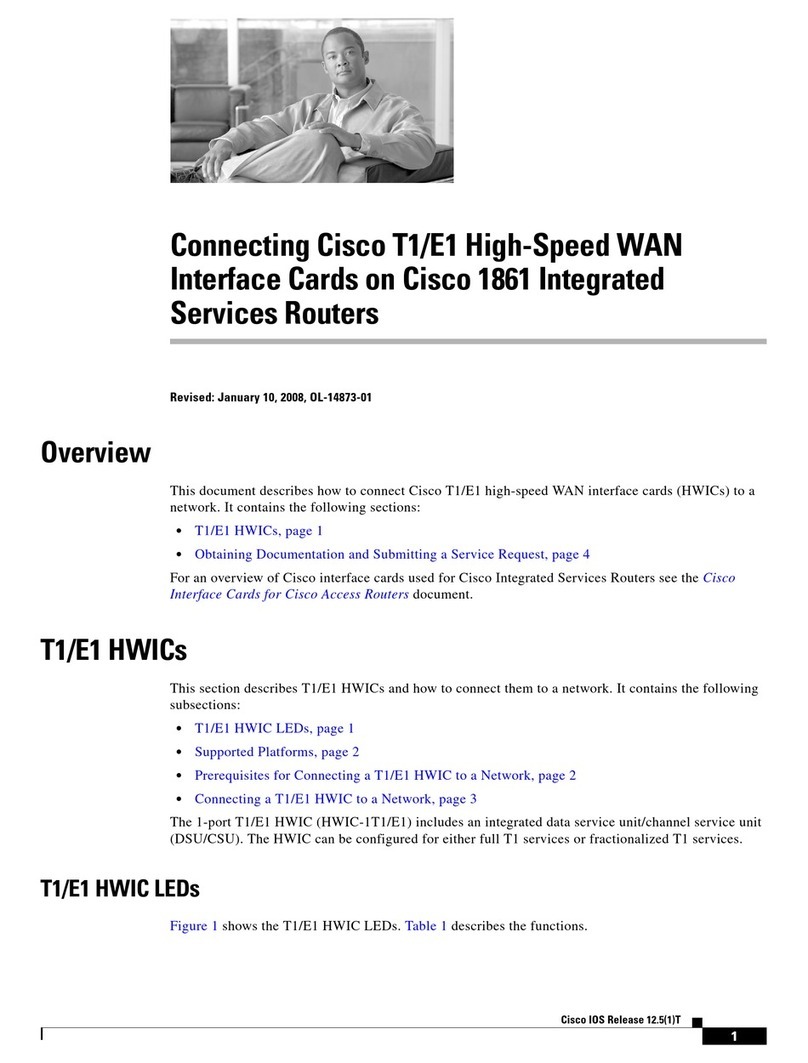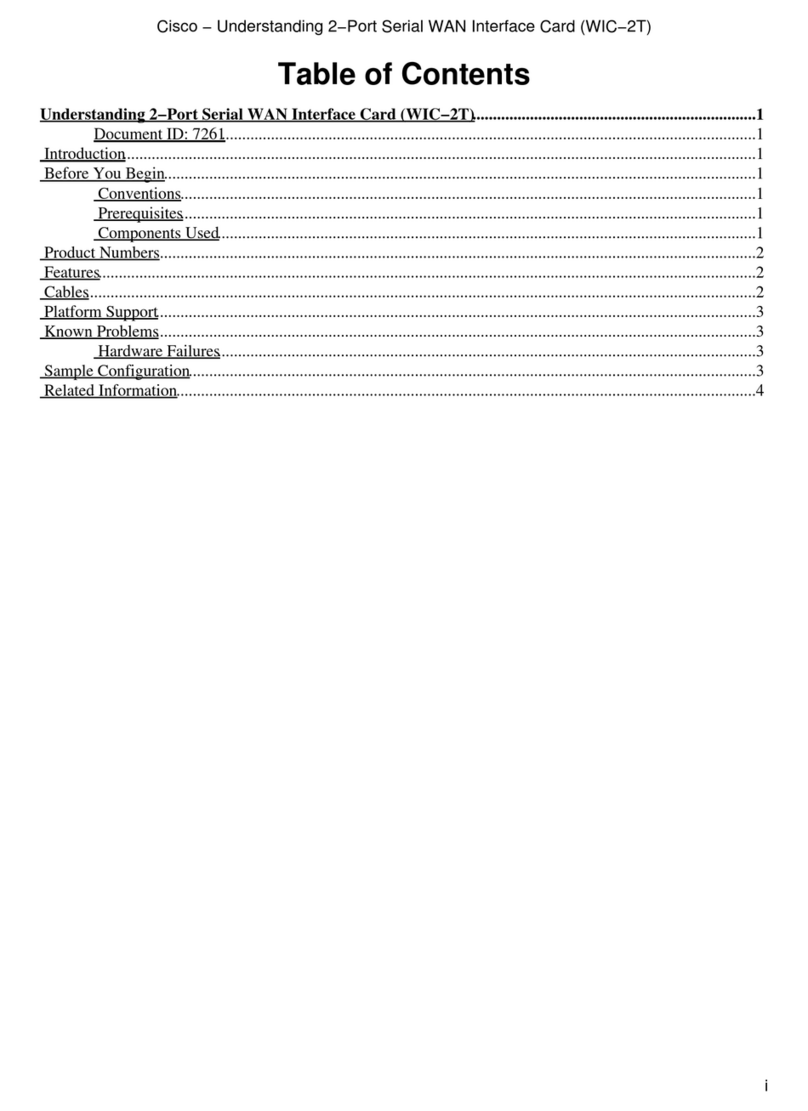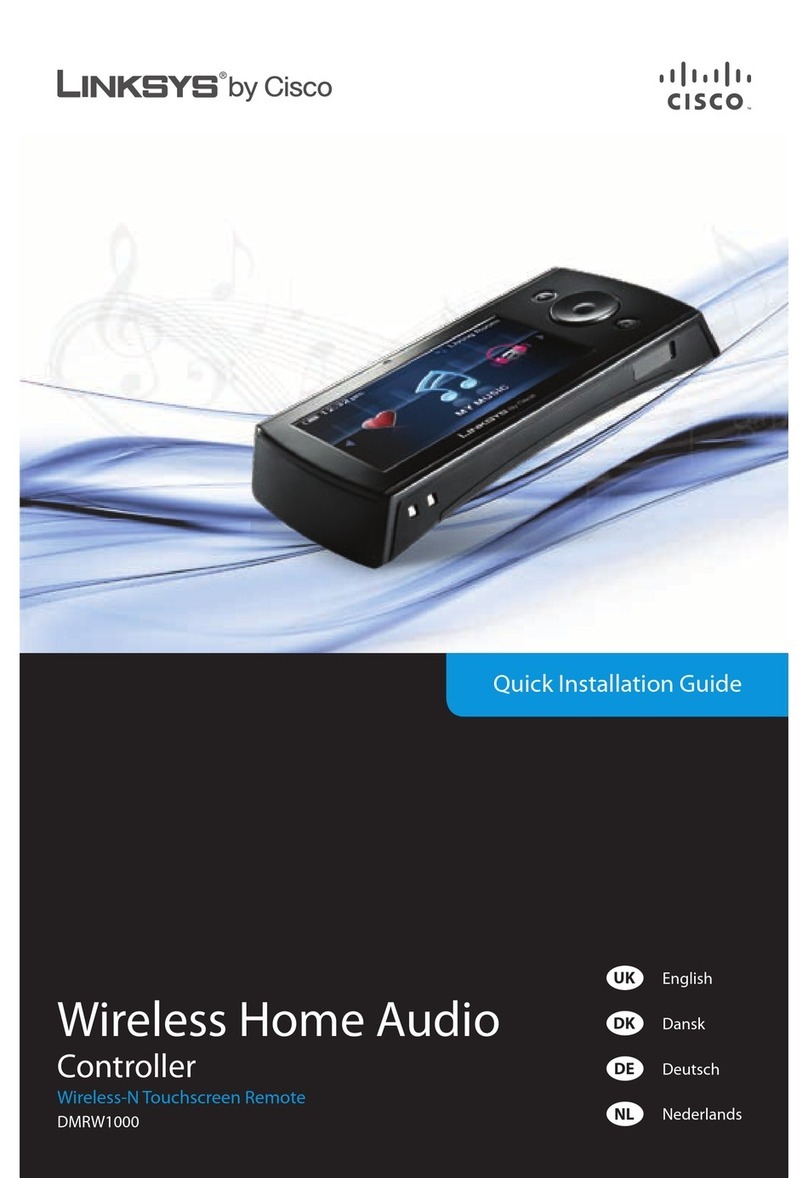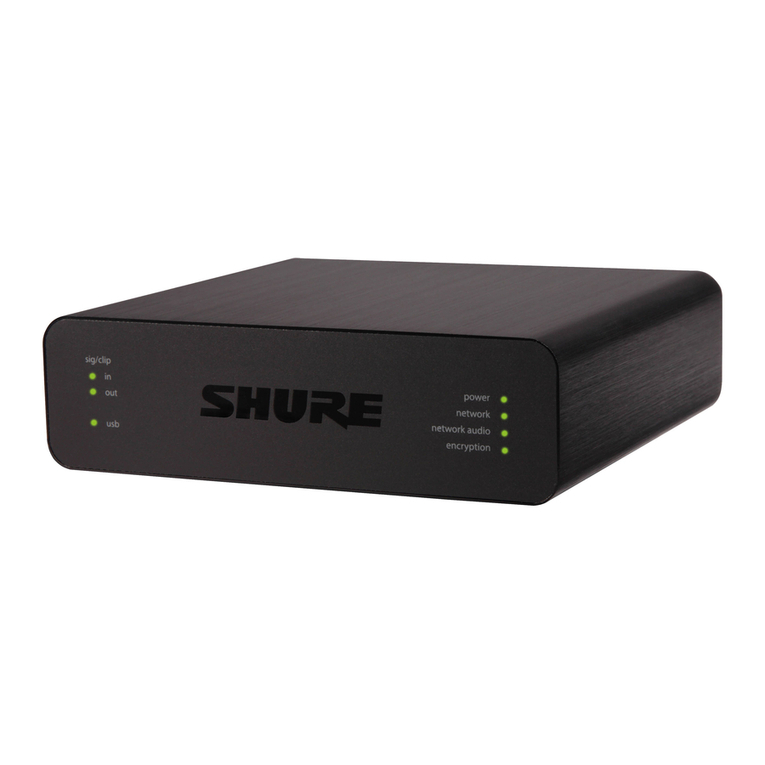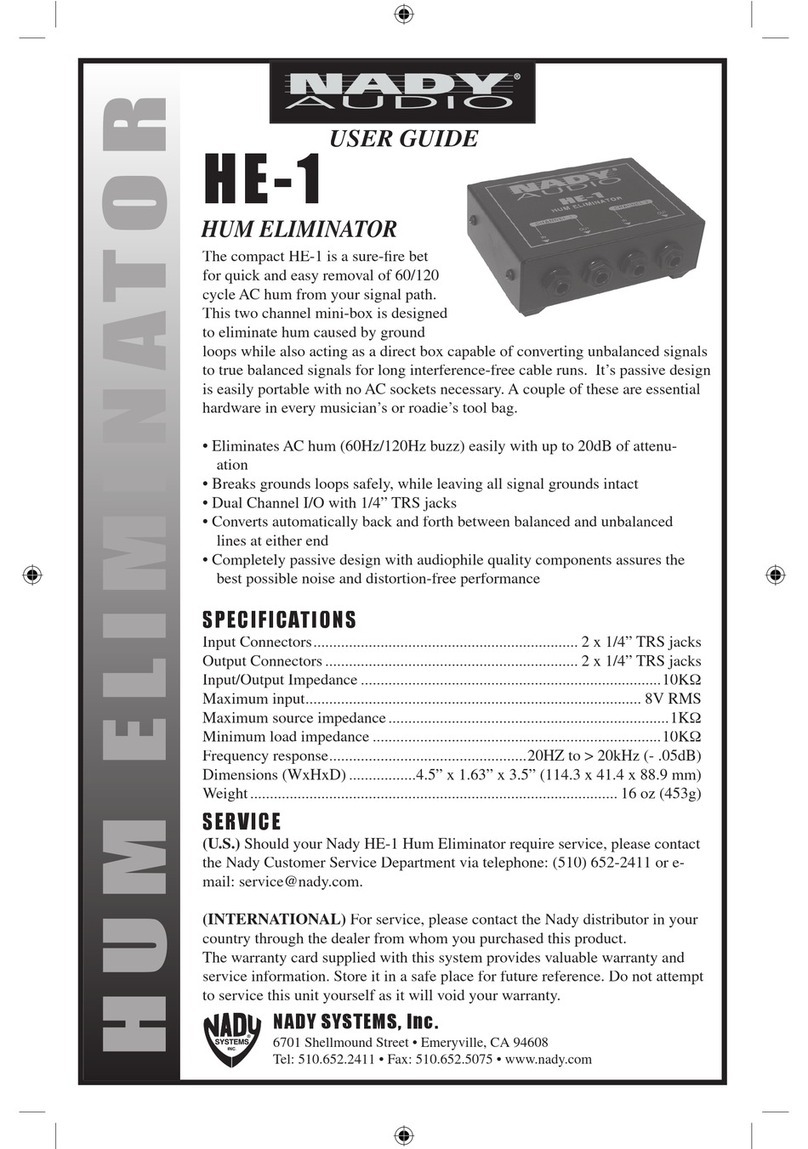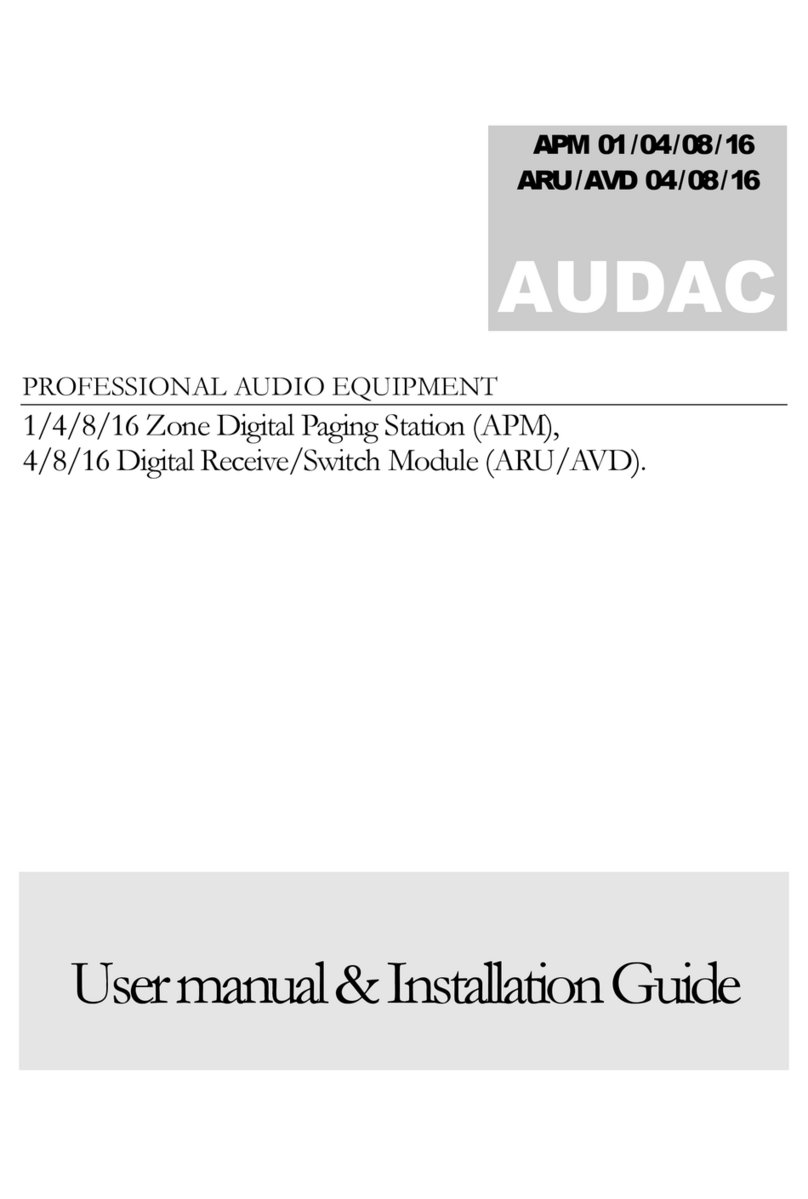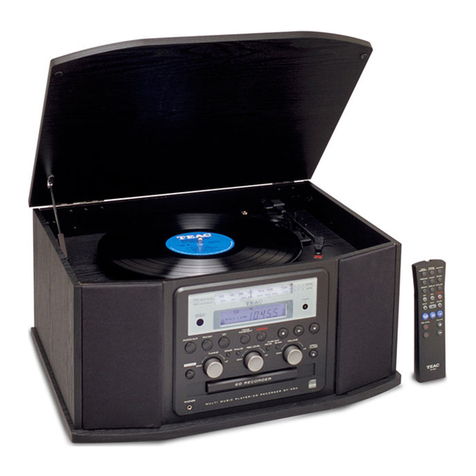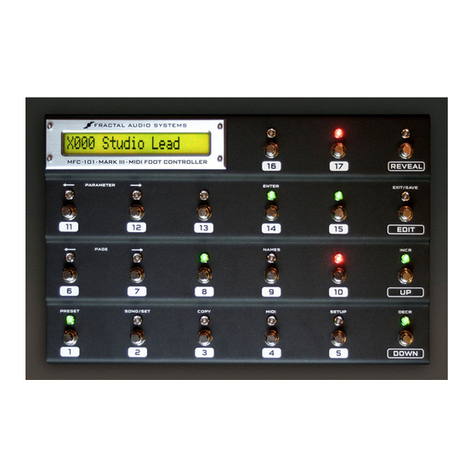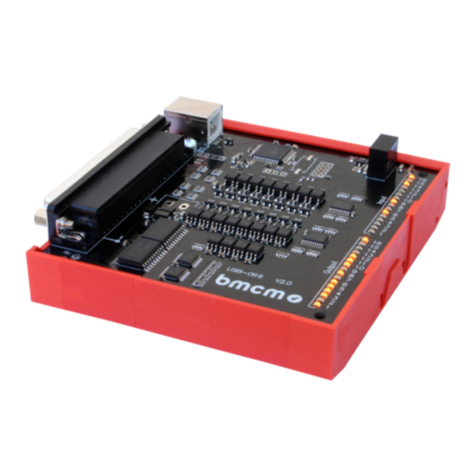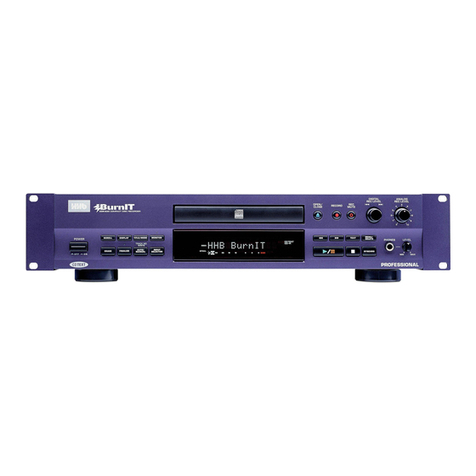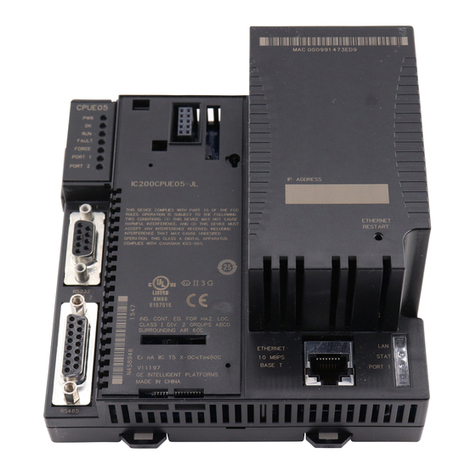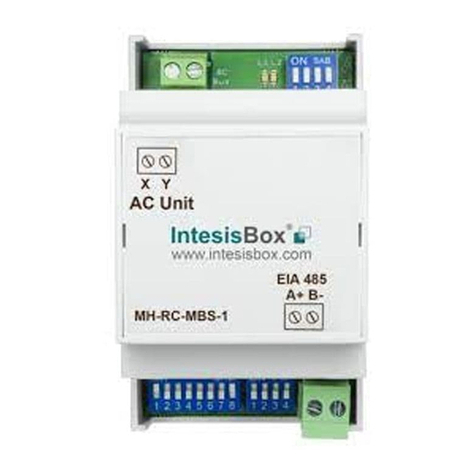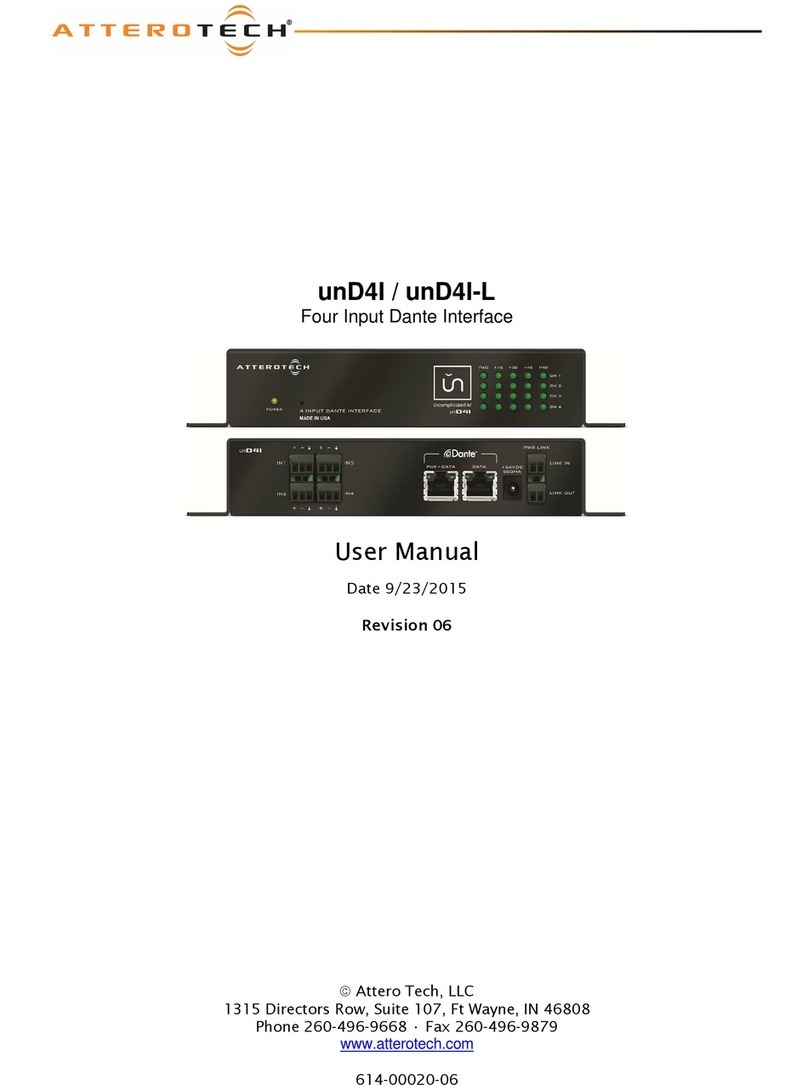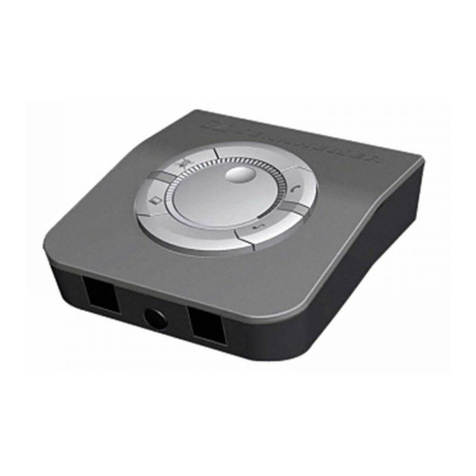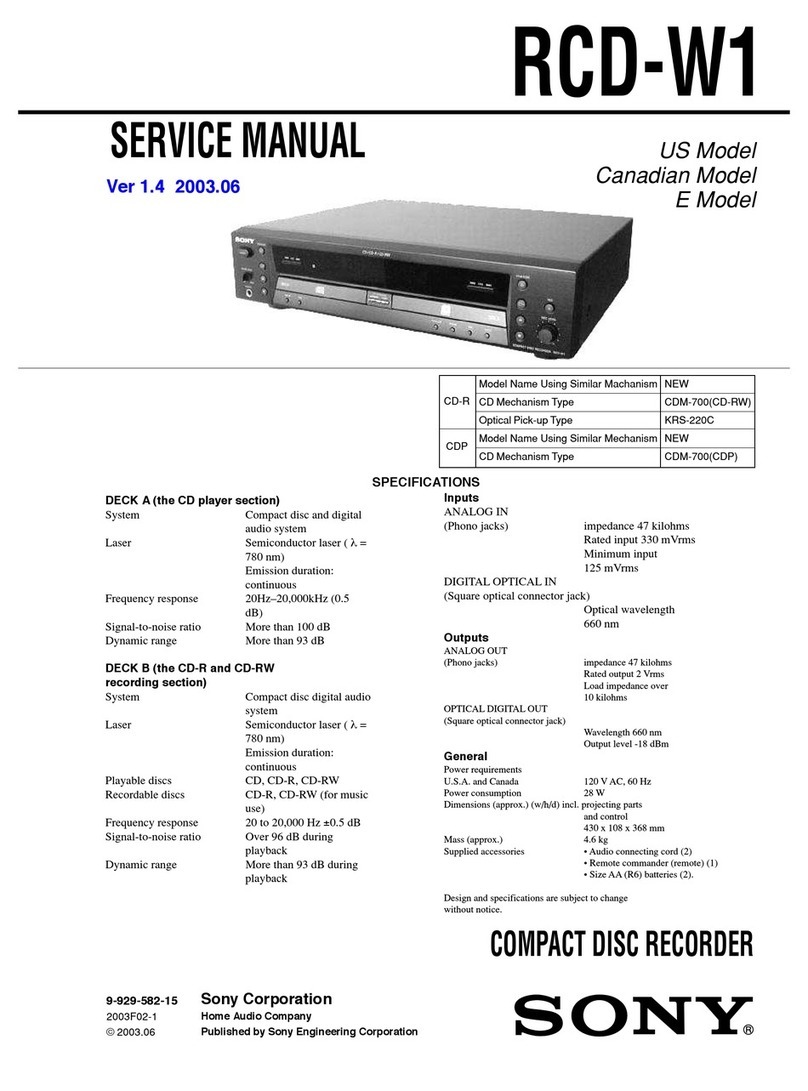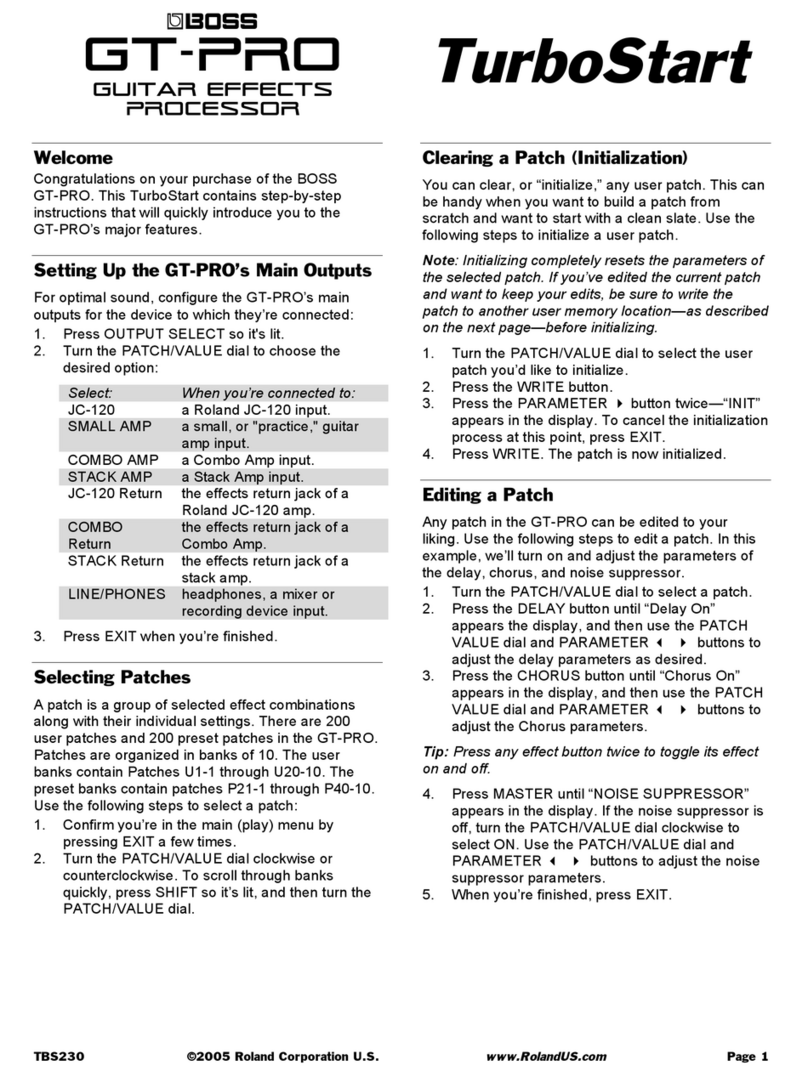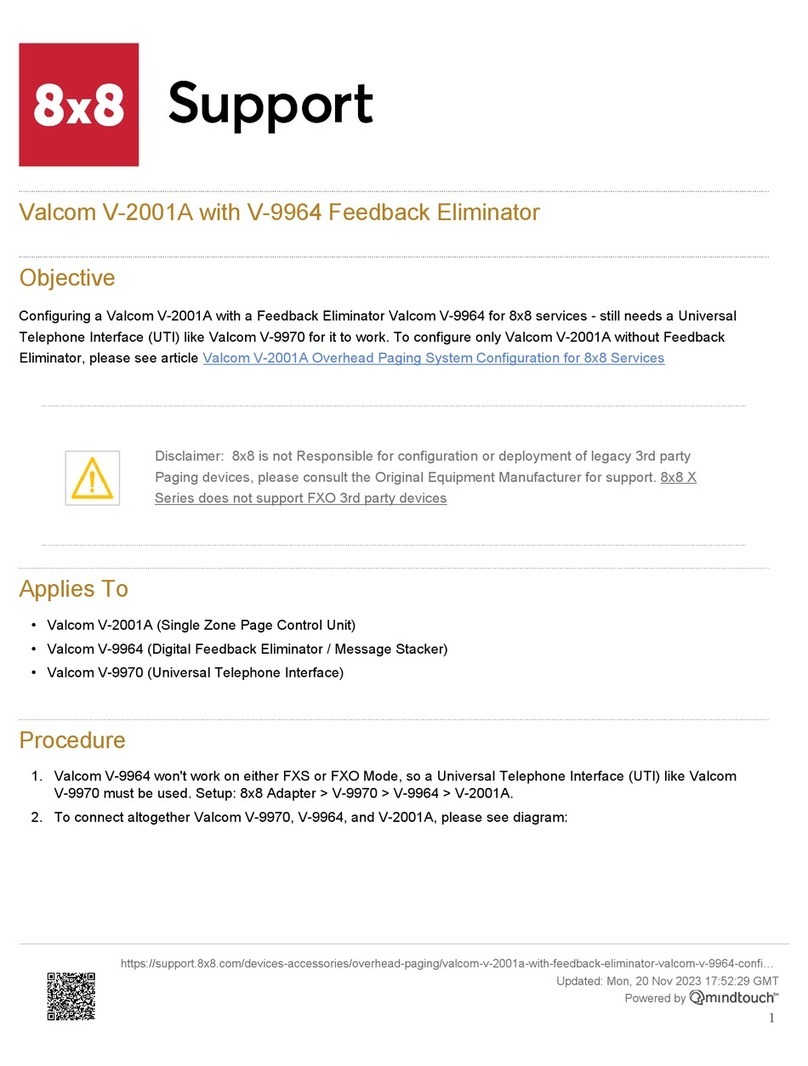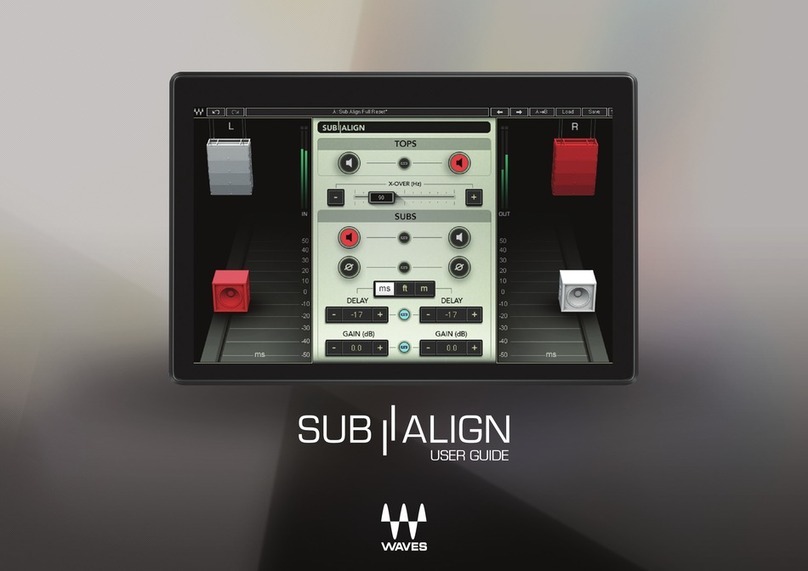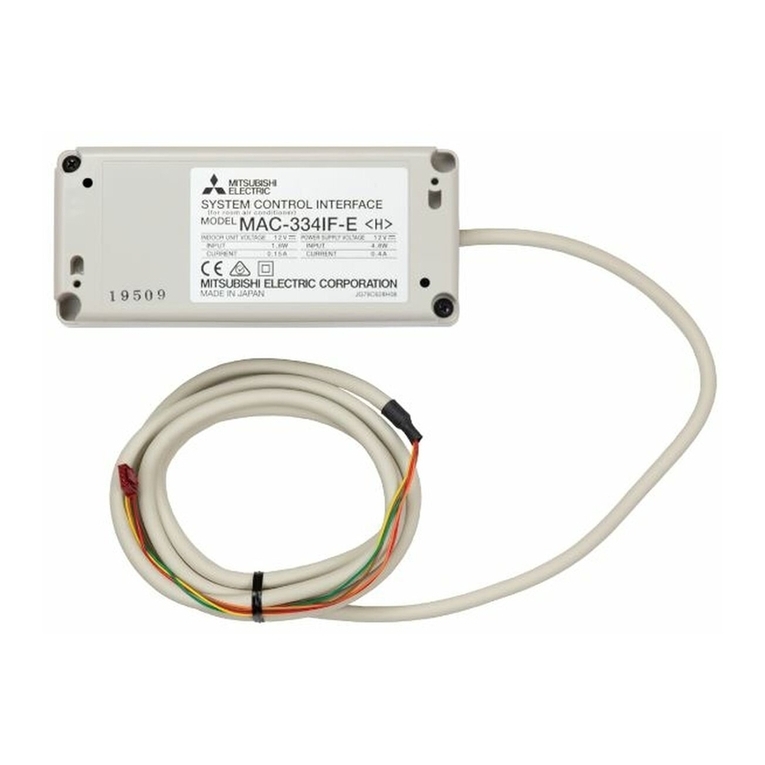
D14869.05 Codec C20 API Reference Guide TC6.0 February 2013. Copyright © 2010–2013 Cisco Systems, Inc. All rights reserved.
10
Cisco TelePresence System Codec C20 API Reference Guide
API fundamentals
This chapter contains a top-level view of the mechanisms
supported by the codec API. You can use the API to manage
all parts of the TelePresence system.
Here you can read about how to access the API, how to use
the command line and what the dierent parts of the API can
be used for. Information on how to use the feedback functions
that are available for the codec is included in this chapter.
The API consists of four major groups:
• Commands
• Congurations
• Status
• Events
These four groups are hierarchically organized, which makes it
easier to nd related functionality. You can nd the complete
lists of all commands, congurations and statuses in the follow-
ing chapters.
Connecting to the API
There are several ways to access the codec API. Regardless
of which method you choose, the structure of the API stays the
same. Choose the connection method that suites your applica-
tion best. Before you start, please read this section about the
dierent methods, as some of those may require additional
conguration changes before being enabled.
The following commands can be set from the System congura-
tion menu in the web interface or on the on-screen-diplay, or
from the command line interface. All of the examples are for
the command line interface.
Password
Initially, no password is set for the default admin user. We
strongly recommend that you set a password for this user, and
any other users possessing an ADMIN role, to restrict access
to system conguration. The password can be changed by
issuing the following command:
xCommand SystemUnit AdminPassword Set Password:
<password>
RS-232/serial connection
This is one of the most used connections to our products for
integrators, as it can be used without an IP-address, DNS or
a network.
Codec congurations
There are two dierent congurations that can be changed for
serial connections; the baud-rate and whether login is required
or not. A reboot of the codec is required for these settings to
take eect.
xConguration SerialPort BaudRate:
<9600/19200/38400/57600/115200>
xConguration SerialPort LoginRequired: <Off/
On>
Connecting
For the C20 codec you need to use a Y-cable to connect to
the Camera port.
NOTE:
• For security reasons the password prompting is turned on
by default, but it can be turned o if preferred.
•
The default baud rate is set to 38400. The reason for this is
that the codec can give very much feedback. When using
9600 baud it may cause your integration to appear sluggish.
We therefore recommend keeping the connection at this
speed or higher.
•
During the initial boot sequence, the codec uses a baud rate
of 38400 regardless of the application baud rate you have set.
For details regarding the RS-232 pin-out and more, please
refer to theAdministrator Guide.
Telnet
Telnet can be viewed as the equivalent of the serial protocol in
the TCP/IP world. Telnet is disabled by default. Before connect-
ing to the codec with Telnet you have to enable it.
Codec conguration
To enable Telnet service, congure the following setting on the
codec. Changing this setting does not require a reboot of the
device, but it may take some time to take eect.
xConguration NetworkServices Telnet Mode: On
SSH
SSH is a secure TCP/IP connection and it is enabled by default
on the codec. It can be disabled. You need a SSH client, such
as PuTTY, to access the API over SSH.
HTTP/HTTPS
As HTTP/HTTPS are connectionless protocols, there is no
persistent connection. There are several ways of communicating
with the API over HTTP.
Codec conguration
In order to enable or disable the HTTP and HTTPS services,
congure the following settings on the codec. Changing these
settings requires a reboot of the device.
xConguration NetworkServices HTTP Mode:
<Off/On>
xConguration NetworkServices HTTPS Mode:
<Off/On>
Connecting
You can inspect the API by entering the IP-address or host name
of the codec in your favorite web browser. In the web inter-
face, you can nd the API documents under the menu section
System Conguration > API > XML API. The HTTP POST and
GET methods are used to execute commands and get feedback
from the codec. This is described in the “Using HTTP” section
later in this document.
